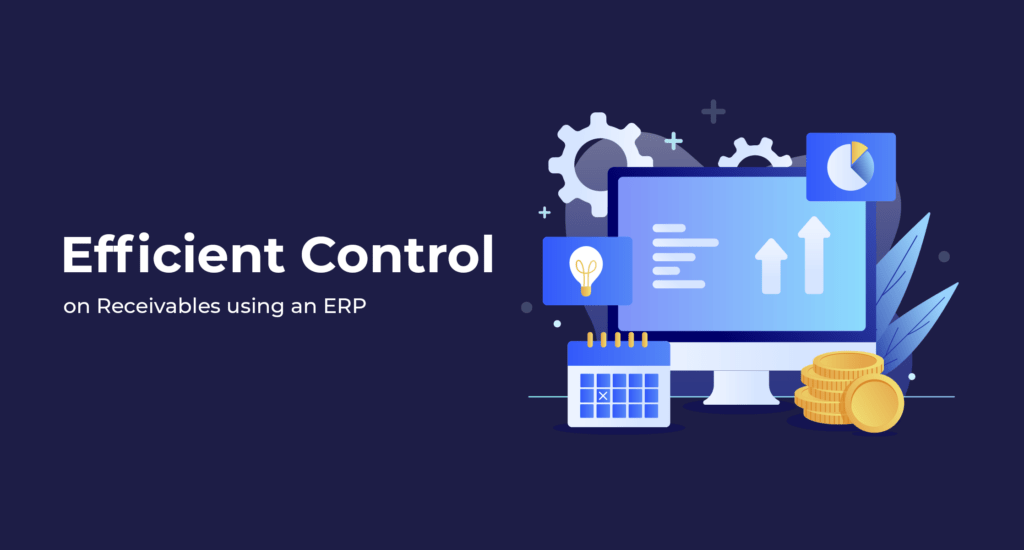
Efficient receivables management is crucial for all organisations to ensure a steady cash flow and maintain a healthy financial position. Unlike in the past, it is no more a luxury even for funded unicorns. Uncontrolled or delayed receivables can lead to liquidity issues, increased borrowing costs, and strain on customer relationships. To tackle these challenges, businesses are turning to Enterprise Resource Planning (ERP) systems which are comprehensive software solutions that integrate various business processes. We will explore how the Proteus Vision way can help control receivables and optimise cash flow.
One of the primary advantages of an ERP system is its ability to consolidate customer data from multiple departments, such as sales, finance, and customer service. By centralising all relevant information, businesses gain a 360-degree view of each customer’s transactions, payment history, credit limit and outstanding balances. This enables better credit risk assessment and helps identify customers who may require proactive credit management strategies to minimise the risk of bad debts.
The crucial part is to ensure customers are defined properly without any duplicates. There must be an automated workflow to ensure that customer information is reviewed by the right team. In many instances the same customer having multiple branches requires a separate code in ERP. There must be correct mapping created to ensure visibility and get the benefits from implementing an ERP.
When billing happens from multiple branches having an efficient team member to handle receivables at branch level would be impractical. Better to have a centralised team to handle this. In such cases you should enable system features to instantly transfer receivables to where the centralised team is, as soon as the shipment and billing happens in branches.
ERP systems facilitate the automation of the invoicing process. This automation ensures that invoices are generated accurately and promptly after shipment is completed on a real time basis. Timely invoices reduce the payment cycle and encourage customers to make payments on time. Additionally, automation minimises errors and eliminates delays, leading to a smoother receivables management process. Automating Invoicing delivery by email as soon as invoice is made ensures that customer has received the invoice.
ERP systems allow businesses to set credit limits and payment terms for each customer based on their creditworthiness and payment history. Implementing personalised credit policies ensures that customers are offered appropriate credit limits while minimising the risk of late or unpaid invoices. Additionally, the system can trigger alerts when a customer’s credit limit is about to be breached, enabling the business to take proactive measures to secure payment.
Many times the master data becomes obsolete as customer engagement with the organisation changes. A rule based credit limit should be implemented to ensure the limits are updated automatically and correctly reflects the credit worthiness of the customer.
An automated system based trigger for delayed payment increases the collection performance significantly. Following actionable trigger should be enabled, traced and monitored to ensure it is effective.
Action: Send automated payment reminders to customers
Action: Stop new order execution when the outstanding is beyond the limit
Action: Mark receivables as Disputed and settle it, monitor such dispute resolution
Action: Initiate process to recall goods if customer does not pay
Action: Post sales secondary scheme and liquidate if there is not enough demand for specific SKU
Setting up a maximum business limit for the customer can be a good idea to prevent large amounts of receivables exposure. Typically credit check works on the basis of outstanding receivables. The business limit is based on how much sales can be done to a customer during a month.
When drafting contracts with customers it is a good practice to ensure that in case of delayed payment there is a reasonable interest to be paid by the customer. This would put pressure on the customer to not delay payment without a valid reason.
An ERP system streamlines the collections process by providing real-time insights into outstanding invoices. The system can generate ageing reports that categorise outstanding receivables by the number of days past due. This empowers collection teams to prioritise follow-ups based on the severity of ther overdue account.
Integrating an ERP system with secure payment gateways enables businesses to offer multiple payment options to their customers. This facilitates faster and more convenient payments, as customers can settle their dues through various electronic methods such as credit cards, bank transfers, UPI or mobile payments.
ERP systems can automate the cash application process, matching incoming payments to the corresponding invoices. This eliminates manual effort and the risk of human errors in recording payments. Automatic cash application accelerates the clearing of open items and provides an accurate view of receivables in real-time
With inaccurate receivables information it is very difficult to get a customer to pay on time. Performing timely bank reconciliation ensures if the customer has made a payment it is accounted for in the receivables.
ERP systems offer robust reporting and analytics capabilities, empowering businesses with actionable insights into their receivables performance. Customisable reports on metrics such as Days Sales Outstanding (DSO), collection efficiency, and customer payment trends enable proactive decision-making and improvement of receivables management strategies.
Embracing an ERP that has builtin features to handle all these processes for receivables management empowers businesses to stay competitive and agile in today’s dynamic business landscape.